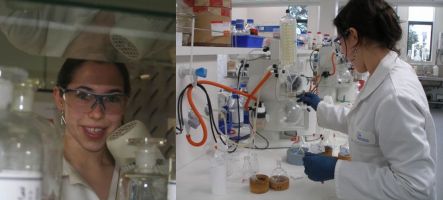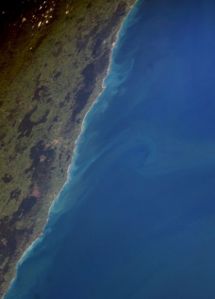Our Changing World for Thursday 23 July 2009
Green Chemistry
Green chemistry is the design of chemical products and processes that reduce or eliminate the use and generation of hazardous substances. Green chemistry can be applied to a variety of chemical processes, for example those used to make pharmaceuticals and plastics. As well as preventing pollution, applying green chemistry can also cut costs.
 Mary Kirchhoff (right) is the Director of the American Chemical Society Education Division and plays an active role in promoting green chemistry in the US. She was in New Zealand recently to address the Chemistry on the Edge conference in Christchurch.
Mary Kirchhoff (right) is the Director of the American Chemical Society Education Division and plays an active role in promoting green chemistry in the US. She was in New Zealand recently to address the Chemistry on the Edge conference in Christchurch.
While she was in New Zealand, Ruth Beran introduced her to Emma Dangerfield (below; image Malaghan Institute) from the Malaghan Institute and Victoria University, who is looking at the therapeutic applications of a specific class of sugars. Emma demonstrated one of her experiments in the lab, and explained how her PhD research falls under the banner of green chemistry.

Land-based Effects on Coastal Fisheries
Fisheries scientists from NIWA, the National Institute of Water and Atmospheric Research, have been collating evidence of land-based effects on coastal fisheries and biodiversity. Such impacts are poorly understood, and until now have been largely ignored. Mark Morrison explains to Alison Ballance that sediment run-off and pollution are just two of the problems that may affect the ability of fish stocks to recover, even when fishing pressure stops.
 'A review of land-based effects on coastal fisheries and supporting biodiversity in New Zealand' (M.A. Morrison et al) was prepared by NIWA for the Ministry of Fisheries (NZ Aquatic Environment and Biodiversity Report no. 37 2009).
'A review of land-based effects on coastal fisheries and supporting biodiversity in New Zealand' (M.A. Morrison et al) was prepared by NIWA for the Ministry of Fisheries (NZ Aquatic Environment and Biodiversity Report no. 37 2009).
In a related story Mark Morrison was interviewed on Our Changing World earlier this year about the importance of the Kaipara Harbour as a nursery ground for juvenile snapper.
Left: NASA satellite image of coast near Castlepoint, showing sediment plumes along shore, with lighter plankton blooms further offshore (NASA image ISS012-E-5727).
Trapping Stoats to Save Takahe
Staff from the Department of Conservation got a rude shock several winters ago when stoats attacked and killed significant numbers of highly threatened takahe in the Murchison Mountains. The surprise was that the birds being killed weren't vulnerable youngsters, such as those featured in a recent Our Changing World story about hand-rearing takahe at Burwood Bush - they were large, healthy adults. To ensure this doesn't happen again an extensive network of stoat traps has been placed throughout the Murchison Mountains, and Nik Joice explains the logistics involved in such a massive effort.
Forensic Chemistry
Forensic and analytical chemist John Watling, from the University of Western Australia, has spent years perfecting the analysis of chemical 'signatures'. Using mass spectrometry, the isotopes of trace elements in products like tea, coffee and wine can be analysed and used to create chemical 'fingerprints'. These will change depending on variables like the soil composition, climate, and water in the growing region, as well as the fertilisers used. Even precious gems and minerals, like gold and diamonds have chemical signatures, and if they are known, they can be used to trace goods back to the source, and ultimately stop fraud and theft. Ruth Beran met with John Watling who was in Wellington earlier this month to speak at the Global Origin and Traceability Symposium.